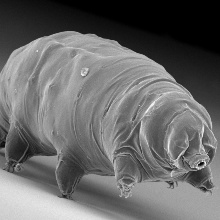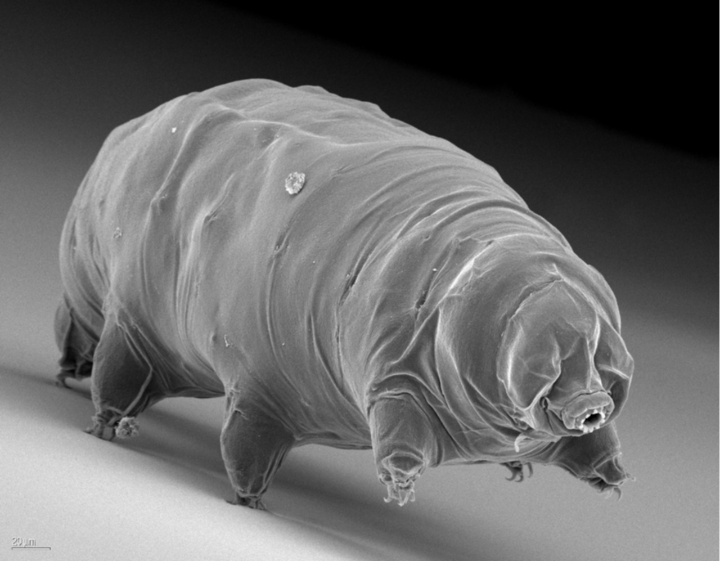“Simply add water" – we know this method from food and drink products, such as instant coffee, that then have to be consumed within a very short time. Yet the principle also works to stabilise cells. Which problems play a role here have now been comprehensively proven for the first time by the Stuttgart water bear researcher Dr. Ralph Schill jointly with colleagues at the German Cancer Research Centre (DKFZ) in Heidelberg, the molecule biologist at the Technical University of Wildau and the bioinformatics faculty at the University of Würzburg.
In Germany water bears live between mosses and are frequently exposed to changes in the micro
climate, which directly influence their survival. Yet the minute creatures that are only one
millimetre in size are real survival artists. If water bears become too cold or too dry, they draw
up their little legs and roll themselves up into a so-called barrels. At this stage all cells dry
out completely and the little animals can survive for long periods of time. If it rains and the
environment becomes damp again, then the animals swell up and can become active again in just under
half an hour as if there had never been a temporary death.
These abilities shown by the young and adult animals, but also embryos, were already well
known at the end of the 18th century and have been at the focus of scientific interest since then –
this has also been the case at the University of Stuttgart for nearly ten years, where Dr. Ralph
Schill and his work group have successfully kept these fascinating model organisms in the
laboratory as one of the very few researcher groups worldwide. In the meantime there has been a
whole series of studies on the genes and proteins, which play a role for the drying out tolerance.
In contrast, up to now there has been a lack of a comprehensive characterisation of proteins and
relevant databases. The research group of Dr. Schill has succeeded for the first time in
identifying and comparing over 3,000 proteins in water bear embryos as well as in dried and active
water bears. In so doing a whole series of new stress, transport and channel proteins were
discovered, which also occur with other organisms that are likewise tolerant to dry environments.
Various stress proteins can stabilise other proteins in the cells when drying out. After
rehydrating repair proteins in particular are employed, which refold or effectively remove damaged
structures in order to replace them.
This detailed proteome analysis is a further step towards understanding how life in nature itself can be preserved over longer periods of time. These findings help in developing new methods in order to preserve macro-molecules, cells and whole organisms more effectively. However, until the results can be implemented in a practical application, for example in bio-banks, Ralph Schill and his colleagues still have quite a bit to learn from the water bears.
Original publication: Schokraie E, Hotz-Wagenblatt A, Warnken U, Mali B, Frohme M, Förster F,
Dandekar T, Hengherr S, Schill RO, Schnölzer M (2012) Comparative proteome analysis of Milnesium
tardigradum in early embryonic state versus adults in active and anhydrobiotic state.
PLoS ONE 7(9): e45682. doi:10.1371/journal.pone.0045682
Your contact person:
Dr. Ralph O. Schill, University of Stuttgart, Biological Institute/Zoology,
tel. 0711/685-69143, email: ralph.schill (at) bio.uni-stuttgart.de



